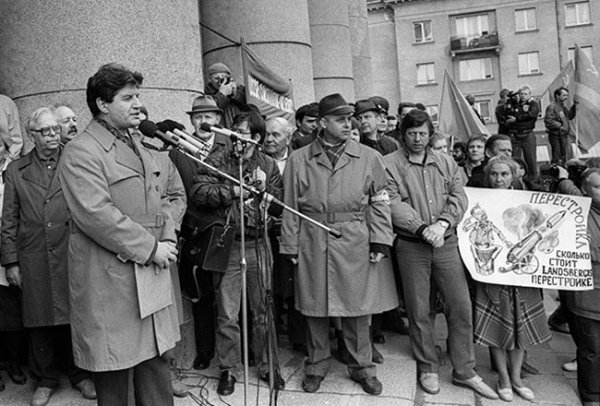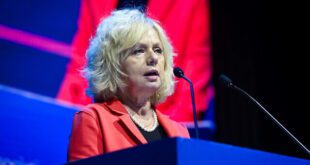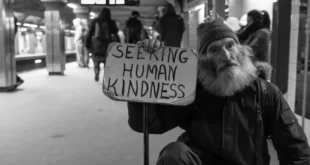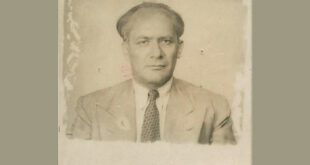To the 23rd anniversary of the tragic events of autumn 1993…
23 years ago, on 3-4 October 1993, the conflict between Russian President Boris Yeltsin and the leadership of the Supreme Council had ended in armed confrontation on the streets of Moscow. Some consider these events the “fusillade in the Parliament”, the other – the suppression of the Communist and nationalist insurgency. Senior political analyst IMR Advisor Vladimir Kara-Murza in opposition to popular myths the facts and the chronology of the crisis.

As adopted, a considerable part of the Russian opposition narrative of recent Russian history, the crisis of September-October 1993 – dissolution by President Yeltsin Congress of people’s deputies and the Supreme Soviet – was the starting point of Russia’s transition from democracy to authoritarianism, logically culminating in Putin’s Thermidor. That is to say, narrative is attractive in its own way logical (if to take an ahistorical approach, driven by past events under the right political arguments), a simple explanation, including for international audiences, and also emotionally charged.
However, this false narrative that ignores not only historical context, but the chronology of the crisis and the events that preceded and followed the dramatic denouement of October 3-4, 1993.
The background of the conflict is often presented as a confrontation between the President and Parliament on key issues of economic policy 1991-1993. This, of course, part of the truth: Congress and the Supreme Council, led by “red Directors” and the recent nomenclature, really blocked, sabotaged or drastically distorted the essence held by the presidential team of reform – for example, when imposed on the government voucher privatization instead of cash. But disagreements between Parliament and the Executive is normal for a democratic system. The essence was different: then the Congress was not a symbol of parliamentarianism and democracy, as they like to present it to today’s apologists, and the last vestige of the illegitimate, born of the October revolution of 1917 the Soviet government. Few people remember that elections of people’s deputies in March 1990 (in contrast to the presidential election of 1991 took place even during the current 6-th article of the Soviet Constitution, institutionally enshrines one-party system and committed role of the CPSU as the “leading and guiding force of Soviet society”. 86% elected in 1990, people’s deputies were members of the Communist party. Chairman of the Presidium of the Supreme Soviet of the RSFSR Vitaly Vorotnikov not without pleasure noted that never before had the Communists achieved such an impressive advantage over the “non-partisan” in the highest legislative body of the Republic.
The Congress was not a symbol of parliamentarianism and democracy, and the last vestige of the illegitimate Soviet regime
In the face of strong democratic protest wave 1990-1991 MPs joined in the General movement – elected (by a margin of four votes) as its Chairman, Boris Yeltsin, adopted the Declaration on state sovereignty of Russia, opposed the coup, gave Yeltsin the authority to carry out reforms. But since the start of 1992, amid the political weakening of the President and the democratic camp most of the Congress and the Supreme Council actually becomes the headquarters of the revisionist and Pro-Communist forces.
Boris Yeltsin, was often called strong-willed and determined leader. However, in a nearly two-year confrontation with the Supreme Council, the President proved himself on the reverse side, constantly searching for compromise and avoiding conflict solutions. In December 1992, the Kremlin and the White house under the mediation of the President of the constitutional court Valery Zorkin has reached an agreement: the resignation of Yegor Gaidar in exchange for a referendum on the basic principles of the new Constitution. Yeltsin did my part: Gaidar the head of the Cabinet was replaced by a protege of “red Directors” Viktor Chernomyrdin. But the Congress was scheduled on 11 April 1993, a constitutional referendum was canceled. MPs were quite happy with the status quo: maintaining the Brezhnev Constitution of 1978, which, like a patchwork quilt, it was possible to patch the voting at the Congress. At the presidential library in the Old square used to joke that they never had the latest version of the Basic law – so often in 1992-1993 were made amendments to it. The joke was unfunny. To the rule of law and democracy it had a very distant relationship.

Ruslan Khasbulatov (left) and the head of storm city hall and Ostankino Colonel-General albert Makashov (right)
Instead of a referendum on a new Constitution, the Congress decided to hold an April 1993 referendum on confidence in Yeltsin and his economic policies. Before that, in March, IX (Extraordinary) Congress of people’s deputies of Russia tried to make the impeachment of the President is not enough to just 72 votes (for the removal of Yeltsin from office voted 617 MPs with the necessary 689). The issues before the members at a referendum on April 25 (despite the protests of the presidential party), sounded as follows: “do You Trust the President of the Russian Federation B. N. Yeltsin?”, “Do You approve of the socio-economic policy pursued by the President of the Russian Federation and the Government of the Russian Federation since 1992?”, “Do You consider necessary carrying out of early election of President of the Russian Federation?” “Do You consider necessary carrying out of early election of people’s deputies of the Russian Federation?”.
The verdict of Russian voters was clear. The absolute majority of the votes, respectively 58.7% 53,0% – expressed confidence in Yeltsin and his economic reforms. 50.5 percent of voters voted against early presidential elections; two-thirds – 67.2% in – called for early parliamentary elections. The people of Russia have spoken: Yeltsin – Yes, revenge-seekers from the White house – no.
The mistake of the President was not in that Decree No. 1400 was signed, and that he was late for five months
However, the results of a nationwide referendum virtually ignored by both parties. Yeltsin – because once again chose to compromise, did not go to drastic measures and refused, contrary to the requirements of many of his supporters, to dissolve the Soviet Parliament, after the April plebiscite was an absolute moral and political right. The Congress – because declared the vote on the third and fourth issues of failed (in the interpretation of the MPs and the loyal constitutional court for decision-making on these issues was not required for the majority of the voters, and from list structure of voters) and the vote on the first and second issues do not have political significance. Vladimir Bukovsky called won the referendum “an empty victory of Boris Yeltsin”. The conflict between the President and the Councils continued. To cut the Gordian knot detrimental to the country of dual power, Boris Yeltsin decided only on 21 September 1993 with the signing of the Decree No. 1400 “On gradual constitutional reform in the Russian Federation”. Mistake of the President was not that the decree was signed, and that he was late for five months.
Common myth – the decree of September 21 resulted in shooting at the White house on 4 October. This version can be maintained either through ignorance or intention to mislead. Even after the seemingly final decision, Yeltsin continued to seek compromise with their opponents. The force is with the presidential party had not been applied either after the “White house defenders” drew first blood on September 23 members of the “Union of officers” Stanislav Terekhov (“the assistant Secretary of defense,” according to the White house) made an armed attack on the headquarters of the joint command of the Armed forces of the CIS, killing the policeman and looked out from the window of a pensioner, – not after the White house began the uncontrolled distribution of weapons (including automatic) supporters of Khasbulatov and Rutskoi.
The romantic image of the “defenders of Parliament” not easy to combine with a real contingent of people gathered in those days the House of the Soviets and staged clashes with the police on the streets of Moscow: members of Communist and nationalist organizations, the Stalinists of the “working Russia”, the fascists of the “Russian national unity”, joined them militants from Transnistria and Abkhazia and former employees of the Riga OMON. On the square in front of the White house, sounded the slogans against “traitors, Jews and foreigners” monarchical symbols side by side with placards: “All power to the Soviets!”. Political eclecticism complements raising for the building of the Supreme Council of the red flag of the RSFSR and the black-yellow-red flag of Imperial Russia.
The countdown to the confrontation went on the second week. The assault was not. On the contrary, on October 1 in the Danilov monastery, under the auspices of Patriarch Alexy II began negotiations of the warring parties. On the night of 2 October the negotiators (Sergei Filatov, Yuri Luzhkov, Oleg Soskovets from the President, Veniamin Sokolov and Ramazan Abdulatipov from the Supreme Council) agreed on a “Protocol No. 1” providing for the gradual lifting of the blockade and the restoration of energy supply of the House of Soviets in exchange for the beginning of the account and storage in the building a freelance weapons. However, MPs on the same day denounced the Protocol, announcing an agreement on reporting of unauthorized weapons and accusing Sokolov and Abdulatipov in “abuse of power”. A new negotiator from the White house, was appointed Yuri Voronin, first Deputy, Khasbulatov and the member of fraction “Communists of Russia”. Negotiations in the Danilov monastery was to be resumed on 3 October. Their most likely outcome was considered so-called zero option, which provided for simultaneous early elections of the Parliament and the President.
About 16 hours on 3 October – around the time when the Patriarchal residence was to begin the next meeting, Alexander Rutskoi and Ruslan Khasbulatov turned to the crowd of thousands of his supporters from the balcony of the White house. “Youth combat-ready men! Here in the left part to be built, to form groups, and it is necessary today to storm the mayor’s office and Ostankino!” rasporyadilsya-President. “I urge our brave warriors to bring troops and tanks to storm the Kremlin c a usurper – an ex-con Yeltsin! – said the Chairman of the Supreme Council. – Yeltsin today must be enclosed in “Matrosskaya Tishina”, all his corrupt clique must be enclosed in the dungeon!”
Giving orders to the armed militants to attack innocent civilian targets, the heads of the Supreme Council have placed themselves outside of Russian and international law
Armed brigades began to form at the 20th entrance to the White house. Within hours, supporters of the Supreme Council under the command of Deputy Minister of defense Colonel-General albert Makashov stormed the neighboring White house of the Moscow city hall (former CMEA). The face of the armed offensive guarding the city hall, the police stopped the resistance. Door shot taken from police cars. Over the building occupied city hall was raised a red flag. And after an hour supporters of Rutskoi and Khasbulatov, including about 3 thousand armed with small arms and rocket-propelled grenades militants under the command of General Makashov, confiscated buses and military vehicles went to the building of the television center “Ostankino”. Here, gathered about 1 thousand supporters “Labour Russia” with fittings and batons away from Riot police (earlier in the day, a crowd of supporters of the Supreme Soviet broke through the cordon of Riot police near the Crimean bridge); to the telecentre drove three armored personnel carriers under the red flag, captured at the storming of city hall. Attempt to seize Ostankino began when a truck struck the glass doors of the television station. Stream television channels coming out of the “Ostankino” was abandoned. In the air there was only the RTR channel, broadcasts from a backup Studio on Shabolovka.
Giving orders to the armed militants to storm the building of the Moscow city hall and the television center “Ostankino” – civilian objects, – the heads of the Supreme Council has placed itself not only Russian, but also outside of international law. As was stressed in those days, Vladimir Bukovsky, “his [Yeltsin’s] opponents have not made political mistakes – they committed criminal offences”.
“People who call themselves defenders of the White house, used force, provoked bloody riots, the massacre – and thus lost any justification to call themselves defenders of law, democracy, the Constitution,” said emergency broadcast RTR in the night from 3 to 4 October 1993 Grigory Yavlinsky. Today Yeltsin Boris Nikolaevich should apply everything that is available to it… to suppress the use of force by fascist, extremist, gangs, collected under the auspices of the White house. (…) The future is what we need today is to remove the rapists from our streets, from our gardens, from “Ostankino” and throw them out of our cities.”

During the storming of the television center “Ostankino”
The rest is known. “The shooting of the Parliament” October 4 (firing blanks at the upper vacant floors of the House of Soviets) was a tragic retribution for past indecision and inconsistency, unwillingness to eliminate the last stronghold of the Soviet power sooner – after the victory in the referendum in the spring of 1993. This “shooting” stopped a civil war, already begun in Moscow and threatened to spill over into the rest of the country, and prevented the seizure of power by forces compared to which today’s Putin’s authoritarianism would have seemed a cakewalk.
Conducted by the Fund “Public opinion” of October 4, the rapid survey showed that 72% of Muscovites were on the side of Yeltsin, 9% supported the Supreme Council.
Grotesque and absurd are the attempts to present the actions of the Russian President in October of 1993 “coup” or comparisons with the junta of Pinochet, eliminate democratic freedoms and for many years to establish in Chile the military dictatorship. The comparison is exactly the opposite: the suppression of the rebellion the power of the Communists, nationalists and radicals motley, who dreams of restoring the Soviet Union, who is on the national dictatorship, and all together – about the folding up the early movement of the country towards democracy, helped to preserve in Russia (another few years), civil liberties, multi-party pluralism, democratic elections, independent media.
“Shooting” stopped the Civil war and prevented the seizure of power by forces compared to which Putin’s authoritarianism would have seemed a cakewalk
12 December 1993 Russia held its first November 1917 multiparty parliamentary elections ended with the victory of the opposition. More opposition to Yeltsin, the Parliament was elected in December 1995; in the spring of 1999 he did not have been only 17 votes to approve the President’s impeachment. Revealing the fate of the representatives of the defeated side. Former MPs, including active participants of October events from the White house (Sergey Baburin, Yury Voronin, Nikolai Pavlov, Nikolai Kharitonov, and many others), took place in the new State Duma. Sat in two convocations of the Duma and General Makashov, whose parliamentary career was remembered major bratmamedgunes “take the light ten Jews.” The leaders of the rebellion, calling to form armed groups to storm the Kremlin, was released by the parliamentary Amnesty in February 1994. In 1996 Alexander Rutskoi was elected Governor of the Kursk region (by the way, in 1999 he became one of the founders of the Pro-Putin Unity bloc – today’s “United Russia”). Nobody interfered and the return policy Ruslan Khasbulatov in 1999, the former speaker ran for the State Duma in single-mandate district in Khabarovsk region, however, with only 5,85% of the vote.
What started with the supporters of Boris Yeltsin in case of a victory in October of 1993 the other hand, the question obviously rhetorical.
During his presidency, Boris Yeltsin made many mistakes. Among them can be attributed to the abandonment of the lustration and the trial of the Communist system and the KGB in 1991-1992, not allowing the country to finally get rid of the totalitarian past, and the Chechen war, and, of course, the choice of “successor” in 1999. Suppression of attempts of armed rebellion in October 1993 in the number of these errors does not apply.







